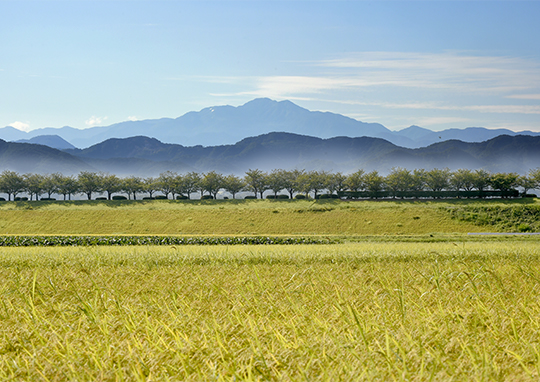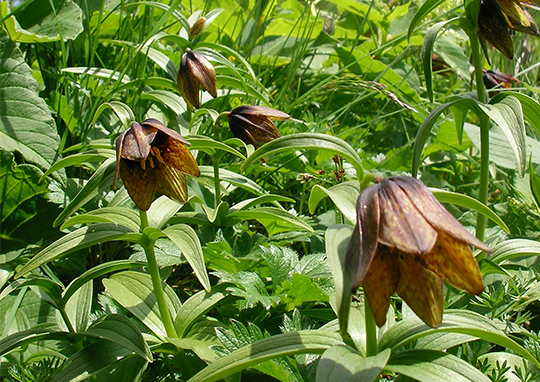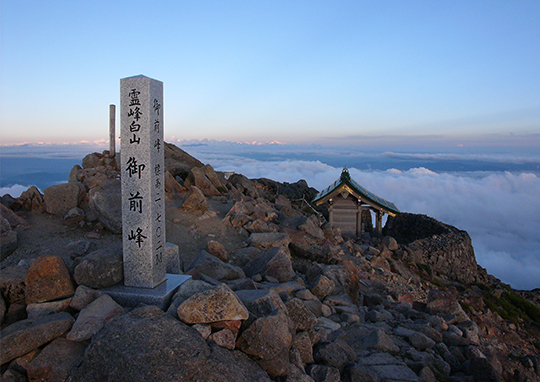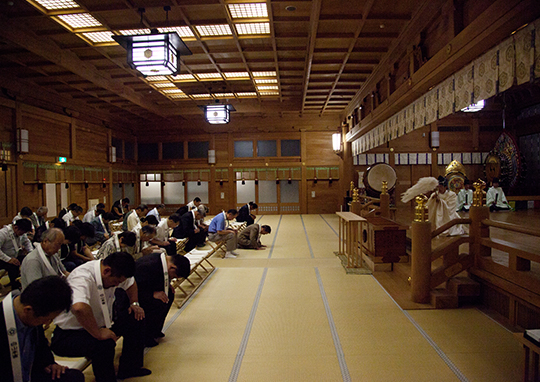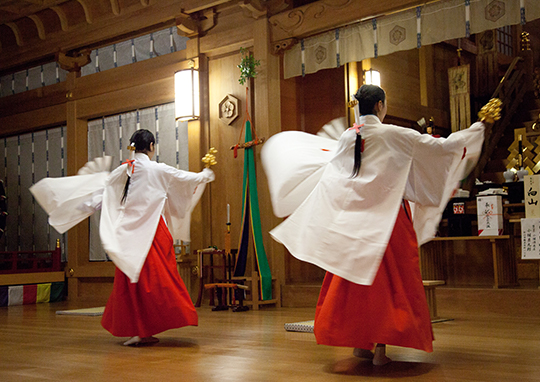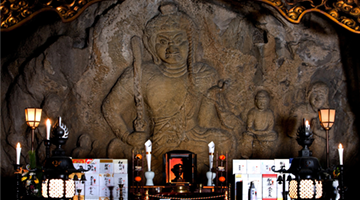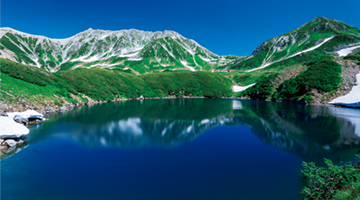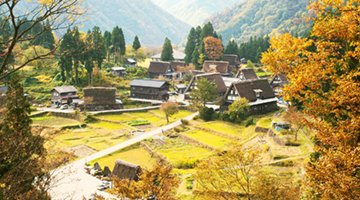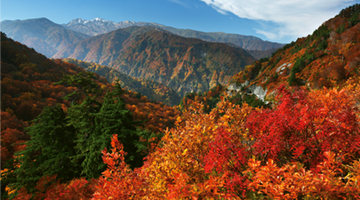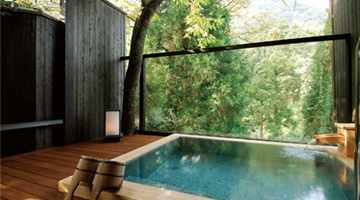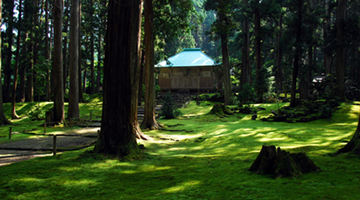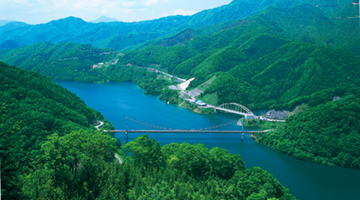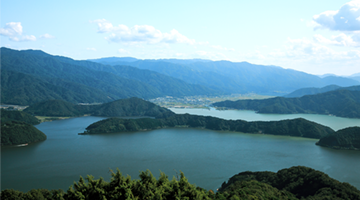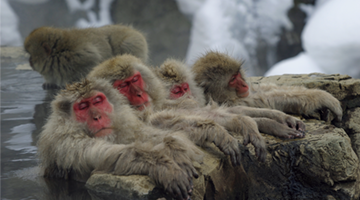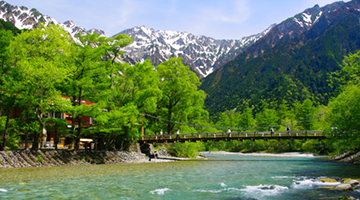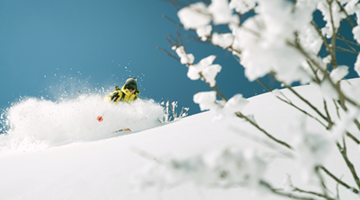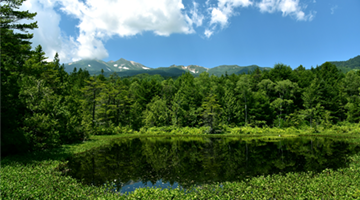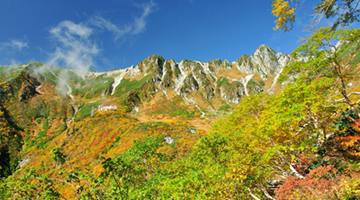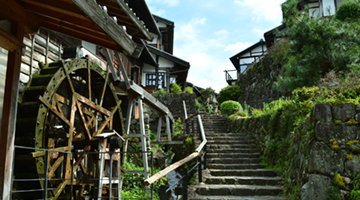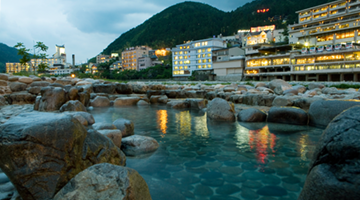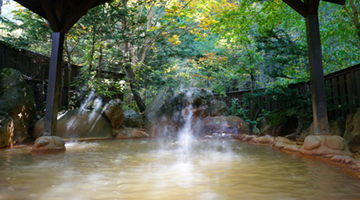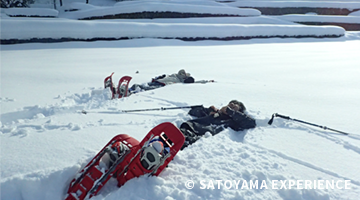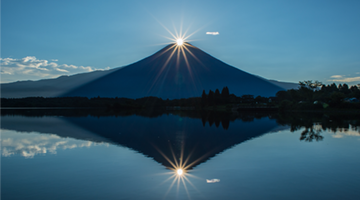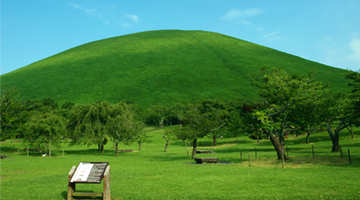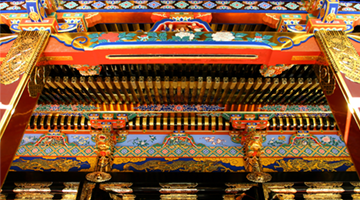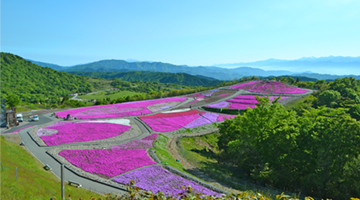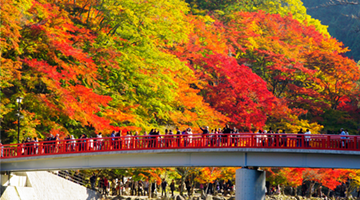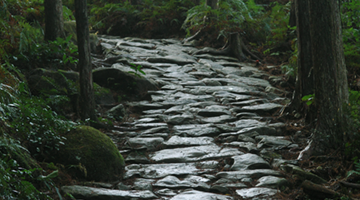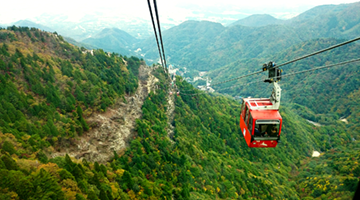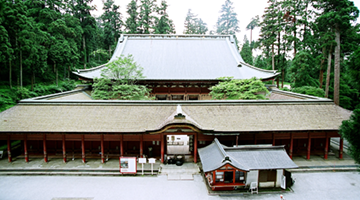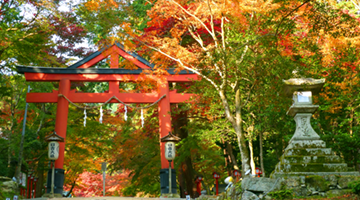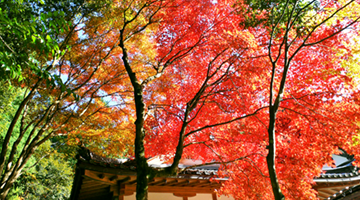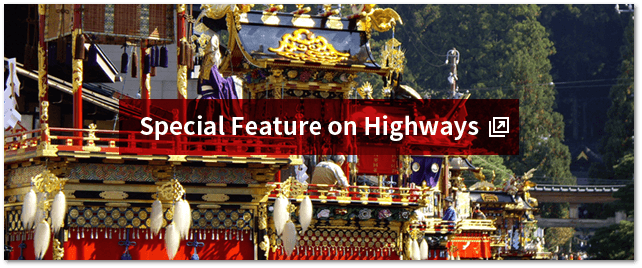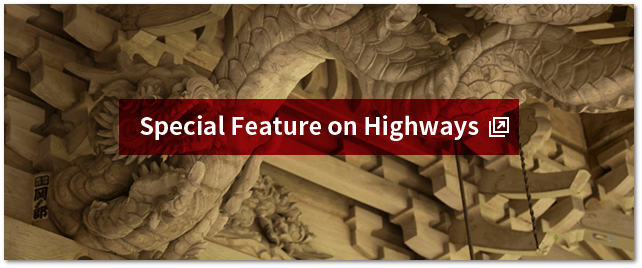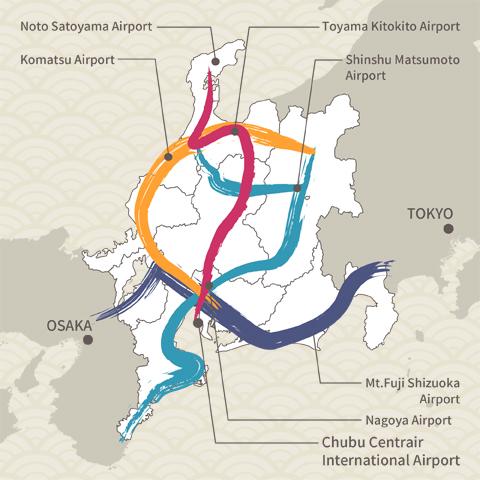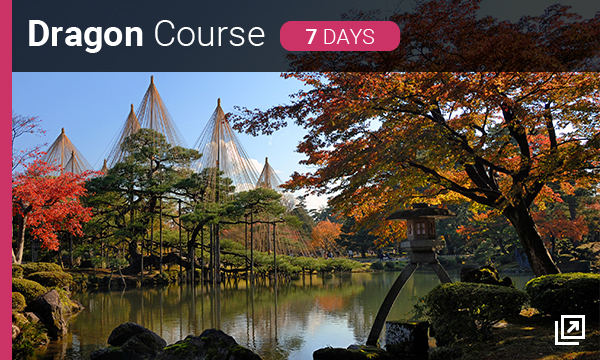Since ancient times, the sacred Mount Hakusan has drawn believers as “the white home of many gods.”
Sacred Mount Hakusan is counted as one of the Three Famous Mountains of Japan, along with Mount Fuji and Mount Tateyama. Mount Hakusan is the collective name for a cluster of three peaks: Gozengamine (2,702 meters), the highest, plus Onanjimine (2,684 meters) and Bessan (2,399 meters). Covered in snow and glistening in the sunlight, Mount Hakusan has drawn believers since ancient times as “the white home of many gods.” Not only is the mountain home to the gods of water and agriculture, who supply the water that is essential for farming and people’s daily lives, but it is also revered as a navigation marker for ships crossing the distant Sea of Japan. Mount Hakusan National Park straddles the borders of four prefectures, Ishikawa, Fukui, Gifu, and Toyama, and the many mountain climbers who visit the park are enchanted by the glories of its natural environment.
In the summer, the area near the summit presents the visitor with an exquisite field of delicate alpine wildflowers. The mountain has lent its name to many of these flowers, such as the Hakusan wedgeleaf primrose, the Hakusan rhododendron, and the Hakusan keyflower, and they adorn its slopes with color. The summit also provides a panoramic view of a chain of mountains, including Mount Shirouma, Mount Tsurugi, and Mount Tateyama, to name but a few, and the sunrise over the Northern Alps is a sight to behold.
Clear your mind of everyday thoughts! Experience a purification ritual.
Being an object of worship, Mount Hakusan has become the site of rituals for acquiring its divine power, and paths to its summit have long been established. The mountain paths for ascetic training are called the Zenjodo. Starting in the 9th century, base stations for ritual climbing, called “bamba,” were established in Kaga, Echizen, and Mino provinces. The word “bamba” literally means “horse place,” and pilgrims intending to climb Mount Hakusan could travel as far as those stations on horseback. But horses were not permitted beyond those points, which were said to be entrances into the sacred realm. The present-day Shirayama Hime Shrine was built on the site of the Kaga (Ishikawa) bamba.
In Japan there is a custom called “o-tsuitachi mairi,” or worshipping at a shrine on the first day of every month. Worshippers give thanks for having passed the previous month without incident, and they pray for good health, household safety, and the like in the coming month. At Shirayama Hime Shrine, special early-morning prayers are offered on the first day of every month, drawing large numbers of worshippers. Worship services in the inner sanctum of the shrine and purification rituals are also conducted under the guidance of the shrine’s priest. In 2018, the shrine will conduct purification ritual training sessions four times (on the first Monday of March, June, September, and December), and the Hakusan City Tourism League plans to conduct purification ritual tours sixteen times between April and November. Consider setting the hustle and bustle of daily life aside and immersing yourself in the pure underground waters of Mount Hakusan.















